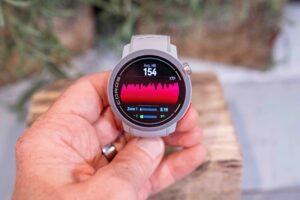31 October 2024

At first glance, the headline news here is that COROS has finally announced an AMOLED watch. But, I actually don’t think that’s the most interesting piece here.
Instead, it’s the fact that for the first time in its history, COROS is trying to compete directly price-wise, with their competitors. Typically speaking, COROS will undercut their competitors (such as with the COROS Pace 1/2/3 & Dura). Or, they’ll completely miss on pricing, and relay on hopes and dreams to sell products (such as the APEX Pro 2 series, which eventually had to adjust pricing downwards).
But the Pace Pro, priced at $399 is the closest the company has ever come to matching their competitors on features and pricing. The question is, does the company pull it off? While simply changing display type to AMOLED might sound like an easy thing, many companies, including Suunto & Polar took months (or more) after release to finesse the details. Just slapping an AMOLED screen on an existing MIP-based watch results in a poor experience, especially in night. Plus, it can result in horrific battery run times. COROS is aiming to avoid that first-timer experience with the Pace Pro, so, let’s see how well it works.
COROS sent over a couple of media loaners to test out. As usual, this review is not sponsored (nor does any company get to preview anything I review), and I don’t take any advertiser money from any companies I review. Once this unit goes back, I’ll go out and buy my own for any future testing needs. If you found this review useful, you can use the links at the bottom, or consider becoming a DCR Supporter, which makes the site ad-free, while also getting access to a behind the scenes video series. And, of course, it makes you awesome.
What’s New/Different:

The COROS Pace Pro is kinda a Pace 3, but also kinda not. Yes, it’s easiest to mentally think of it as a Pace 3, but technologically speaking…nah. After all, it’s got a new processor, new heart rate sensor, new GPS chipset, new display, new battery, new button sizing, new GPS antenna, new band design, new…well…basically everything. Including, most notably, a price nearly double that of the Pace 3. In fact, one could basically argue this is actually more of an Apex 3 than anything else. Nonetheless, we’ll continue pretending it’s a Pace 3+.
Here’s how it differs from the Pace 3:
– Switched from MIP to AMOLED display (from 240x240px to 416x416px)
– Increased display size from 1.2” to 1.3” (still mineral glass)
– Increased case size from 42mm to 46mm
– Increased button sizes and grip substantially
– AMOLED Display brightness is 1,500 nits
– New optical heart rate sensor (versus Pace 3)
– Added ECG feature (Note: Not FDA/CE certified, no Afib detection)
– New GPS chipset & antenna design (versus Pace 3)
– Increased GPS battery life from 25hrs to 38hrs (‘All Systems’ mode, full chart below)
– Daily smartwatch battery life 20 days (gesture display) or 6 days (always-on display)
– Switched from included fabric band to included silicon band
– Increased internal storage from 4GB to 32GB
– Increased processor speed
– Added full color maps (details down below)
– Increased weight slightly from 39g (silicone) to 49.1g (silicone), or 30g to 37.1g (if nylon/fabric)
– Maintains 5ATM (50m) water resistance rating
– Maintains temp range of -4*F to 122*f (-20*c to 50*c)
– Price increases from $229 to $349 (though obviously, a big feature jump)
Here’s the battery life chart:

When it comes to mapping, COROS has implemented the same style of maps as found on their APEX & Vertix series watches, which I detail down below. In short, that’s background maps, but not routable maps (you can have routes/courses and turn-by-turn directions, but cannot re-route mid-course). Still, as you’ll see, it works perfectly fine in most cases. More importantly though, is COROS has confirmed that coming in Q1 2025, the company will add street/trail names to the maps. That’s even more notable since Polar just announced last week, that they will be adding POI (points of interest) data to their maps in Q1 2025. Now, if these two companies just blended their efforts, we’d have everything!
In the Box:

The COROS Pace Pro is very similar box-wise to other COROS products, except there are two notable differences. You’ve got the watch, a charging keyring adapter, and some paper stuff.

Notably first, the watch now comes with a silicone band instead of a lightweight fabric band. There are pros and cons to this. On one hand, I really liked the previous fabric band. On the other hand, the fabric band meant that after your workout/shower, the fabric was still wet, and would leave a wetsuit on anything you rested your wrist on (pants, shirt, couch, crotch, etc…), for about 30 mins post-shower/pool. The silicon band is obviously dry the instant a towel is applied to it.

The second difference is the lack of charging cable, and instead, a charging keyring adapter. COROS has played around with such an adapter in the past, and 3rd parties have made one for other companies including Garmin and Apple. Essentially, you take your own USB-C cable and stick it in the end of the keyring adapter, and boom, you’ve got a charging cable. COROS says if you can’t find a USB cable of your own, what rock are you living under, they’ll happily send you one.

The only downside to this adapter, is COROS slightly changed it (and the charging port) from all their previous watches. It is neither forward nor backwards compatible. Specifically, the new charging port is deeper than the previous one. And likewise, the charging adapter has a slightly girthier connector, so it won’t fit older watches.
COROS says the reason they did this was they found the existing connector was prone to connection issues long-term, since it wasn’t deep enough (Ironically, they noted the same thing happens on a competitor cable/port. That’s ironic, because the super-snarky me would reply, ‘Well yes, if you didn’t blindly copy Garmin’s connector in the first place, this wouldn’t have happened’…but I won’t say that…). In any case, the good news is I confirmed that if you are in a pinch at a far flung race without the new cable, you can safely take/steal an older cable from someone else, grab a butter knife from the hotel kitchen, and remove just a tiny bit of the extra rubber on the side of the cable, and it’ll fit just fine down into the deeper port on the Pace Pro. You’re welcome.
Sorry, where were we? Oh, right, stickers:

With that, let’s talk basics.
The Basics:

For this section, I’m going to focus on aspects like daily usage, watch basics, and everything non-sport. So stuff such as activity tracking, sleep tracking (and night usability), HRV tracking, buttons, the new AMOLED display etc…
First up, let’s get the buttons out of the way. The unit follow other COROS watches, by having a Digital Crown and a secondary deviated button (but doesn’t have a third button akin to the Vertix series):

I’ve long said, whether it’s COROS or Apple, I don’t find the Digital Crown all that awesome on a watch (or a bike computer). But I recognize some people like it, it’s just not my thing. I will admit it works well for maps (zooming in/out), but for everything else I’d rather just have buttons.
In any case, moving along to the big ticket item – the new AMOLED display. The COROS Pace Pro sports a 1,500 nit display, which is plenty enough for both night-time visibility, as well as sunny beach visibility (given I now life in the middle of the Mediterranean Sea, I can validate this works perfectly fine on the brightest of days).

Like all AMOLED displays, you’ve basically got two ways the display can be configured. The default is called ‘Gesture Based’, which means the display turns off when you’re not looking at, and then instantly turns back on when you raise your wrist. However, my preference is ‘Always-on’ mode, which obviously takes a battery life hit (down to 6 days in smartwatch mode), but means the display is in a dimmed state normally, but goes to full brightness when you raise your wrist. Thus, even as I type this, you can see the time just fine in the dimmed state:

And then when I rotate my wrist, it goes to full brightness:

As noted, COROS claims 6 days in always-on mode. My testing has had 1-3hrs a day of GPS workouts, and thus, I’m finding it much closer to 4 days. This is my standard way of validating this across all watches. Most other companies that claim this 6 days (e.g. the Garmin Fenix 8), do manage to hit the 6 days with my 1-3hrs of GPS time per day. That said, I’m probably an outlier in how much GPS time I’m doing daily compared to most people. I’ll cover GPS battery burn down below.
Now, at night, the watch automatically turns on a sleep mode (based on your configured sleep times), which greatly reduces the backlight to a non-annoying level. It doesn’t blind you or light up your pillow/sheets. It’s just barely visible. It’s perfect. Though, as of this writing I can’t get back to sleep mode if I unlock the watch. COROS says a fix is coming tomorrow or the next day, which should resolve that.
However, my singular complaint is that COROS doesn’t have a flashlight mode, thus, you can’t leverage the ultra-bright display as a flashlight like you can on Apple/Polar/Suunto/Garmin/etc… COROS says that’s on the bucket list, but there’s no specific timeline for it.
Ok, let’s get into some of the general data bits. First up, is the watch face. You can choose from a couple different watch faces, but I think the default one is actually pretty solid:

From there you can scroll down into the widgets, where you’ll find some daily stats first, summarizing your calories, steps, workout time, and blueish blocks:

You can tap into this to see more details about the previous 7 days, such as these:


After that you’ve got a bunch of training load and performance stats. This includes your running fitness score (and race predictor times), as well as intensity trends, and recovery times.

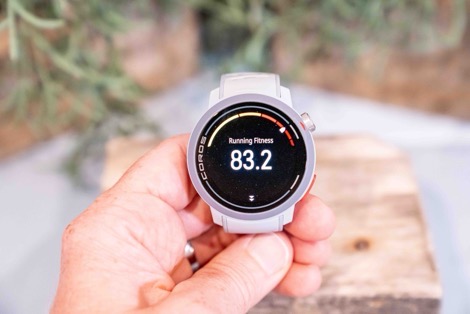

I’d repeat my usual complaint here with COROS’s display of Training Load, which is that your training load resets every Monday morning, providing absolutely zero useful information about your actual training load. Other companies show a 7-day trending value, which lets you actually figure out training load. One of these day’s they’ll change this:

After that you’ve got heart rate and stress, and you can scroll over the timeline to see both your heart rate values throughout the day, as well as stress values. Of course, anytime you’re working out it’ll show you highly stressed, regardless of how enjoyable that time is (other companies zero out the stress values during workouts).


Then we get into various sleep metrics, including HRV and sleep data. Start with sleep data first, you can see your nightly stats automatically, and all of these fall-asleep/wake-up times have been spot-on for me.



That said, I don’t do any sort of data analysis on sleep stages/phases, because even the most high-end comparative data devices is only about 80-85% accurate (and we’d never judge HR sensors based on that). Given COROS doesn’t really do much else with the sleep phase/stage data, we don’t really need to worry about it.
Then there’s the HRV (Heart Rate Variability) data. HRV is a fairly useful metric to roughly see how you’re recovering as well as handling overall daily stress (or sleep). The said, as with all companies, keep in mind that HRV is heavily influenced by other factors too – including alcohol, drugs (good or otherwise), sleep, jetlag, stress, longer/harder workouts, etc… Point being HRV is useful, but *you* need to know/identify *why* it increased or decreased. If you drank 2 glasses of wine right before bed, then it’s likely going to inflate HRV.


Still, the numbers I see here have been consistent with other companies data. Here’s data from last night, for funsies:
COROS Pace Pro: 63ms
Oura Ring V4: 67ms
Whoop 4: 62ms
Of course, all of this data is coming from the updated optical heart rate sensor, which we saw introduced in the COROS Vertix 2S this past spring, here’s the back of the Pace Pro:

I’ll dive into accuracy during sport later in this review. Also note that COROS has an ECG mode, but that mode won’t identify Afib conditions, nor is it certified by the FDA or CE (EU). As such, don’t use it as a medical device, but rather, just a fun way to watch an ECG plot go up and down in realtime.
Finally, after that we’ve got some general metrics around elevation, sunrise/sunset, barometric pressure, weather, and text messages.
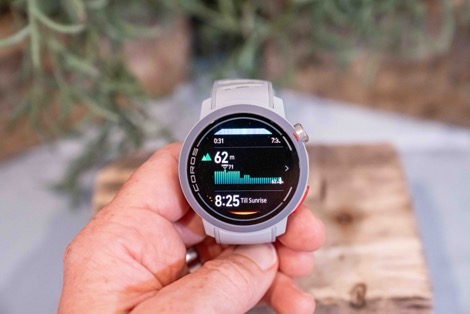


When it comes to text messages, you can view basic text details, but there’s much room for improvement here. For example, emojis don’t come through. While other aspects like photos in texts are limited by Apple (in the case of an iPhone), COROS could add photos in texts on Android. Here’s a text message comparison between a Forerunner 265 and COROS Pace Pro (Des’s emoji’s simply vanish altogether, leaving an empty message).

In some ways, for the endurance sports watch companies (not on Apple Watch or WearOS), I find text messages one of the most uniquely accurate ways of acting as a barometer for the overall smarts of a watch. In this case, COROS could do well to spend some time adding emoji support to take advantage of that display.
Oh, and one last thing is music support. While you can load music onto the device’s 32GB of internal storage, and play that back via headphones, more than likely you won’t. The only music supported is MP3 files that you own. There’s no support for any streaming services (or podcasts), and realistically speaking, streaming services (e.g Spotify or YouTube Music) just aren’t going to happen for COROS.
This castle gates closed years ago, and are barely even accessible for the biggest of smartwatch companies shipping millions upon millions of units a year. That said, I feel like COROS could try and bridge the gap a bit on things like podcasts, which are totally within their control/realm of possibility.
With that, let’s talk about what you actually bought this watch: Sports.
Sports Features:

The COROS Pace Pro has pretty much all the sports profiles you’re likely to use, with COROS only savings a handful of sports profiles for their higher-end watches, such as various climbing (like rock climbing) modes in their APEX & Vertix series. With the sizing being pretty reasonable at 46mm, it’ll work for both small wrists (like my wife’s above), or my larger wrists.
To being, you’ll tap the upper right button to see the lists of sport profiles, and then select a profile of your choice. You can also select structured workouts and Training Plan details from this menu, as well as Fitness Tests.

Once you’ve selected a sport profile, it’ll start locking your heart rate and finding GPS (if outdoors). Additionally, if you’ve got sensors paired, such as a heart rate sensor or cycling sensor/power meter, it’ll go and connect to those. Likewise, you can enable various pacing features and alerts (depending on the sport).

You can also select a course other than navigate, but I cover that down below in the ‘Mapping & Navigation’ section.
When it comes to data page/field configuration, that’ll all happen within the COROS smartphone app, which lets you configure data pages/fields as you see fit, including some ages that are graphs, like elevation:
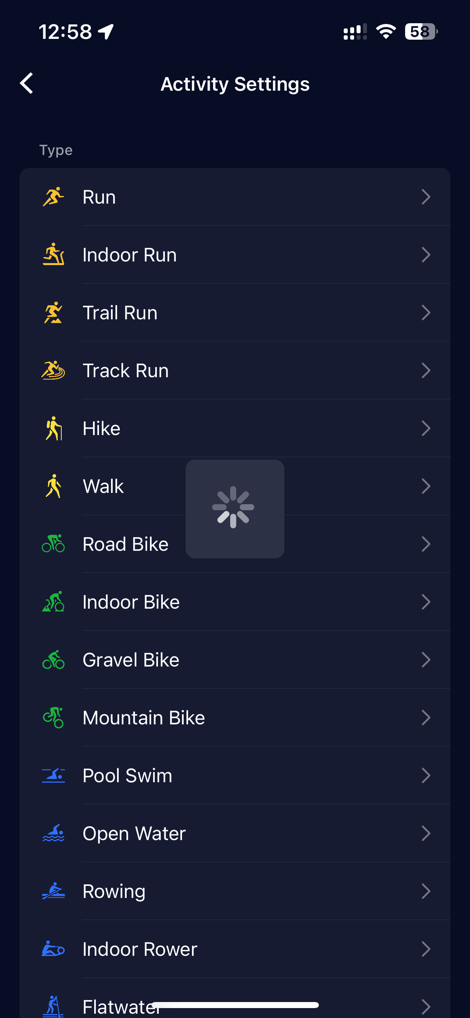


Once you’re ready to go, you’ll tap the button to start, and it’ll start displaying the data you’ve configured and recording the workout. Here’s a few data pages from my trail run today. Note that at present it’s incredibly difficult to take photos of the COROS Pace Pro screen without getting lines on the photo. These lines do not appear in real-life, just in cameras. Most other manufactures actually spend time to ensure the screen refresh rates don’t conflict with common camera shutter speeds, but COROS seemingly hasn’t done that work yet (as no other AMOLED device is as impossible to photograph as the COROS Pace Pro).



(The lines are exceptionally difficult in brighter conditions, such as those during daytime sunny conditions. It’s easier to photograph indoors or in very low light conditions.)
Once you’re done with your workout, you’ll see a summary of it on the watch, with plenty of stats to scroll through:
Likewise, you can see all of these details in the COROS app as well:



And of course, you can sync this data instantly to 3rd party apps like Strava, TrainingPeaks, and others, once you’ve set them up inside the app. In that same app (and on the watch), you’ll also see stats around training load, Training Status, Recovery, Running Fitness, Cycling Fitness, and more:



And you can look at your trended load and training status as well over various timeframes.
For aspects like Running Fitness, that’s going to depend heavily on you having some pretty hard interval workouts in there. While I’ve had a lot of interval workouts lately, none of them have been pain-inducing (I’ve been accompanying my wife on her workouts), thus, I don’t really have a super solid data set for it to guesstimate on. That said, for cycling, I’ve had a few more pretty hard workouts, and it seems to be pretty far below my actual cycling FTP. It predicts me at 259w, when in reality other platforms are putting me in the 290w range right now (which feels about right).
Likewise, the training load values it’s providing on recent workouts seem double that of other platforms (including Suunto, Garmin, and Polar.) For example, my trail run today on COROS was 433 (TRIMP), whereas Garmin was 227, Suunto was 208 (EPOC), Polar was 241 (TRIMP). The heart rate between these four devices was virtually identical (especially given two of them were connected to the same sensor/strap).
Overall, COROS does a good job at recording your workout data and showing you the data from it. However, I’d love to see COROS step-up their focus on the training load pieces. Aspects like showing 7-day trending load, and understanding why the training load values are so much higher than their competitors, despite using the same theoretical formulas, are all areas to work on.
Mapping & Navigation:
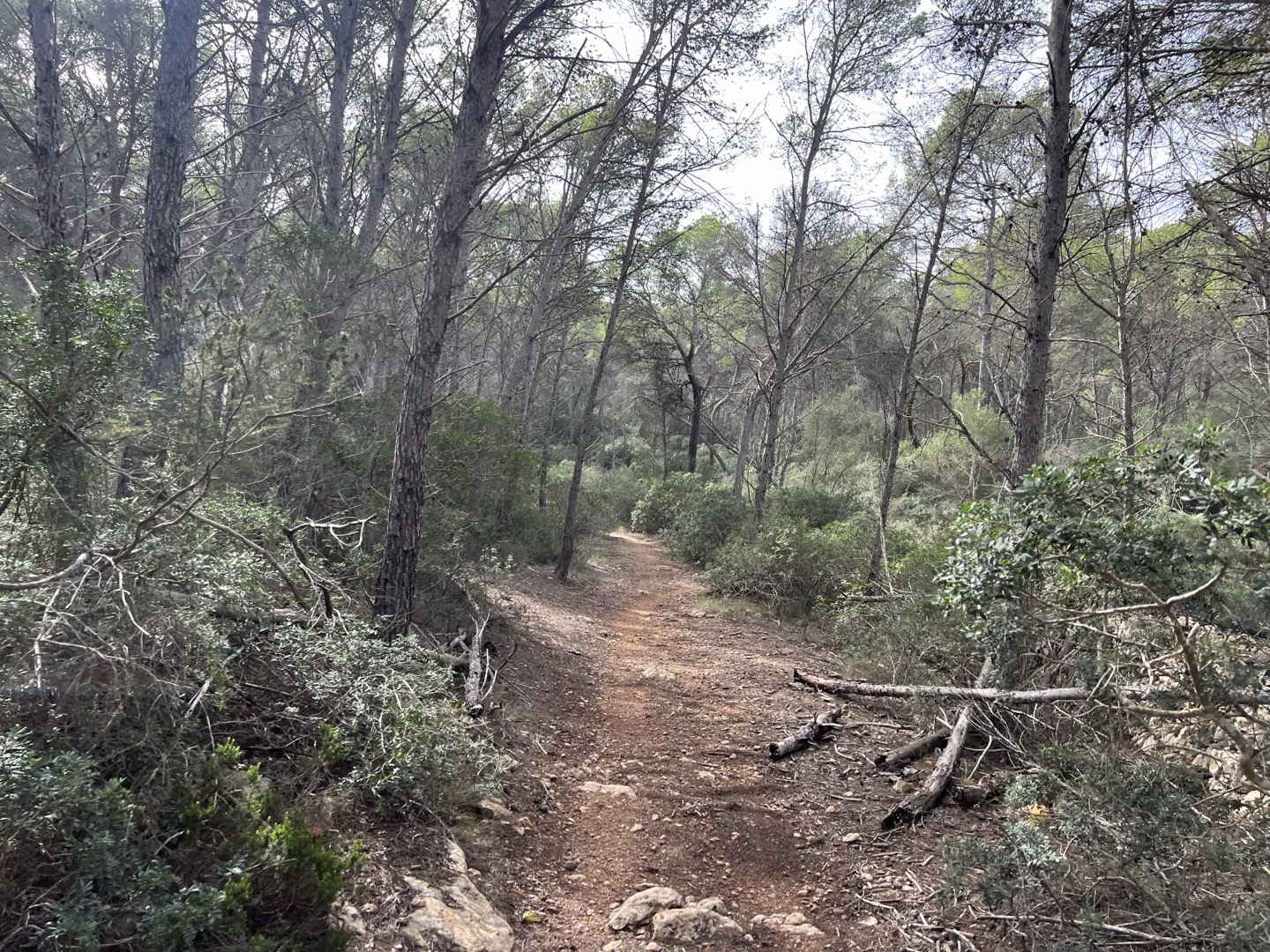
Outside of the AMOELD display, the addition of mapping is the biggest feature on the Pace Pro. Of course, given the price point (very nearly that of the APEX series), it kinda makes sense for it to be included.
The first thing to understand about mapping is the general mapping landscape in terms of map levels. Simply put: Just because a watch has mapping, doesn’t mean all maps are created equal. I’ve previously included this little chart/list in other reviews, which many people have said is super helpful to understanding the differences:
Breadcrumb trail only: This is when you don’t have a background map, but just follow a little trail on a blank screen – this is what the COROS Pace 3 has, as well as Garmin Forerunner 265.
Non-routable Maps (Pace Pro): This is when you have a map displayed behind your route, which shows terrain/trails/lakes/water/mountains/etc… However, this isn’t routable, so it doesn’t actually *know* if you’re on the ‘Deer Lake Trail’ – it just knows you’re on the breadcrumb track. If you stray too far from the trail, it’ll give you an off-course warning, but it cannot smartly re-route you back. It just tells you via compass how to find the trail again. This is what the Suunto Vertical & Race are, Polar Grit X2 Pro & Vantage M3/V3, as well as all COROS APEX Pro/Vertix series, and COROS Pace Pro are.
Routable Maps: This is the ‘highest’ level, and is when the watch can actually route on the trails by itself, if needed. It knows you’re on Deer Lake Trail, and the next trail coming up is Big Bear Trail. And it knows if you miss that turn, whether or not you need to turn-around, or can catch-up later on. This is what most of the higher-end Garmin devices are (any devices with mapping, like the Fenix/Epix series, or higher-end Forerunners).
Now, just because the COROS units don’t have routable maps, doesn’t mean they aren’t useful. Far from it. I only use routable maps on a hiking device perhaps once per year (admittedly, when I do use it, it tends to be super important – like escaping an incoming storm in the high Alps). Still, I don’t see it as a mission-critical feature for my usage. Note that for cycling, I do see it as more critical, given the vast differences in road cycling versus hiking on trails (distances traveled, speeds, variability, etc.…).
So, let’s look at today’s trail run as a simple example of how things work. First up is creating the route. You can do that in Strava, Koomoot, the COROS app itself, or any GPX file you want to import. In my case, I created the route in Strava, and then it synced to the COROS app. You can see it, along with other routes, here in the app:



From there you’ll need to manually select it, and sync it to the watch. Again, I’m going to be nitpicky there: There’s just no reason for that. When I create a route on Strava/Komoot/etc, and it’s starred/favorited, it should instantly sync/push all the way to the watch. They’ve got 32GB of storage on there, enough for thousands of routes. Garmin, Polar, Wahoo, etc… all operate this way – instant sync.
Once synced, you’ll have it on your watch to execute. To do so, first select the sport profile you want to use (such as running or cycling), then within that, select navigation and choose your route (in my case, Sunday Lighthouse):
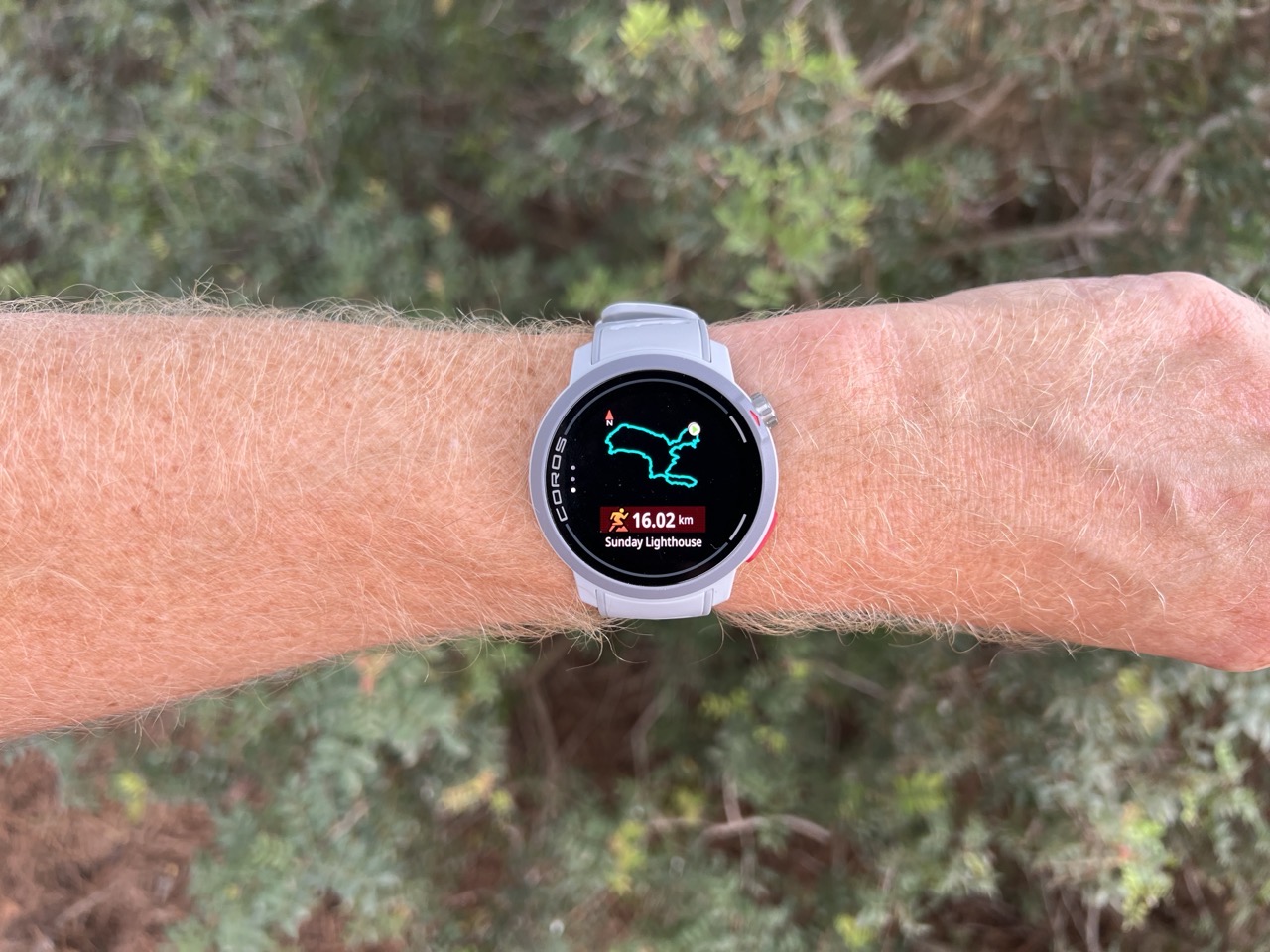
You can see details about the route, including the distance and elevation profile. You can also toggle on/off turn-by-turn prompts (on by default), as well as off-course alerts (called deviate alerts).


Then, once you’re out on the route navigating you’ll see your course overlaid on the underlying maps, and an arrow with the direction you should be traveling. As you approach each turn, you’ll get a briefly appearing arrow on which direction to go (I don’t understand why this arrow doesn’t just stay present like every other company):

(On a two-hour trail run, this is the single frame that is usable without black lines. It’d be better if I went out at sunset, but honestly, COROS should have spent the time to ensure outdoor daytime photos of their watch are usable. Every other company does.)
If you go off-course, you’ll get a ‘Deviation’ alert after about 50m. This lets you know that you need to re-think your life (and trail) choices and change things. The COROS watch won’t re-route in any capacity, so it’s up to you to fix things and get yourself back on the line.
Still, having the off-course alerts and underlying map make it far easier to route out on trails and fix errors. You can easily see on the trail map the ‘wrong’ trails, so yo know you’re on the ‘right’ trail. Speaking of seeing things, you’ll also see where you are elevation-wise on your course.
Now, talking about those maps COROS has, there’s topographic details, but no other points of interest or labels on them (again, COROS says that trail/road labels are coming in Q1 2025). So at least as of now, you can’t see the road/trail/lake/mountain/etc names as you would on Garmin’s maps. In most cases, that’s not a huge deal, to be honest. Most of the time I’m in various foreign countries, and these names are rarely super helpful to me (since I can’t pronounce them anyways and rarely matter to the actual route navigation). But again, if you were talking road cycling or cycling in general, these are much more important.
You can download maps by choosing them within the app using the Map Manager. All the maps are free, globally. One of the things I like most about COROS’s maps though is the fact that I can actually download them over Bluetooth. Every other company requires downloading map tiles via WiFi, due to the larger size of the map tiles (Bluetooth isn’t good for large data, just small bits). In COROS’s case, they’ve sub-divided up the world into a gazillion map tiles, so you just select the tiles you need, and choose to download via WiFi or Bluetooth:


Again, about 90% of the time I realize I don’t have the right tile when I get to my destination country, and so the ability to quickly do so via Bluetooth from my phone is a massive ass-saver compared to trying to get them via WiFi (as watches can’t leverage hotel networks due to the sign-in prompt).
As with the training load bits, COROS has the bulk of this stuff right. Yet, there’s still good room for improvement, especially around the route/course workflow, and I’d love to see a ClimbPro like feature that automatically shows each upcoming climb, such as they have on their Dura cycling computer (and their competitors have too, including Suunto & Garmin for hiking/running).
Accuracy (GPS & Heart Rate):

First, we’ll start on the heart ride side with something easy – a 45min indoor cycling trainer ride. This is generally the easiest thing for optical heart rate sensors to handle, since you have minimal hand movement, and no road vibrations to deal with. As you can see, things are almost identical here versus the chest strap, just a slight bit of delay on the recoveries for a few seconds, somewhat common with optical HR sensors, but mostly good.

Next, let’s kick it up with some outside running, this time a nearly 2-hour long trail run. This had plenty of ups and downs (both intensity and elevation), to evaluate. Thus in effect, lots of little intervals in terms of intensity. This is compared to both a chest strap, the Whoop 4 optical HR sensor on an arm band, and the Polar Vantage M3’s optical HR sensor:

As you can see above, pretty darn similar across the board. And if I zoom into one of those impromptu intervals, all of them trend fairly close together:

Ok, so let’s step up – here’s an interval workout from a few days ago. This one includes 2-min, 1-min, and 30-sec intervals. As you can see, it’s very very close:

About the only quibble I’d have is the recovery on some intervals is a bit delayed, but again, not enough that I’d be concerned with it:

Meanwhile, a different day for some longer 12-minute intervals, it’s basically spot on, no complaints:

Lastly, one of the most difficult things is outdoor cycling, so, let’s take a look at that on this nearly 3 hour route up in the mountains:

Yup, the struggle bus was real there. Pretty much constantly unusable data across the board from the COROS Pace Pro:

Definitely one of the worst optical HR performances I’ve seen this year in outdoor cycling.
So, taking a look at the GPS side of things, we’ll start off easy like with the heart rate bits – on this looping interval run. This particular run didn’t have much in the way of dense trees or buildings. It was rather straightforward:

Still, it was notable to look at the cornering, and overall it did quite well here. It seemed to have tighter tracks each loop than some of the other units – I ran in the exact same spot each time on this section (a relatively skinny sidewalk section):

Likewise, a few days earlier on a relatively similar route with much overlap, perfect:
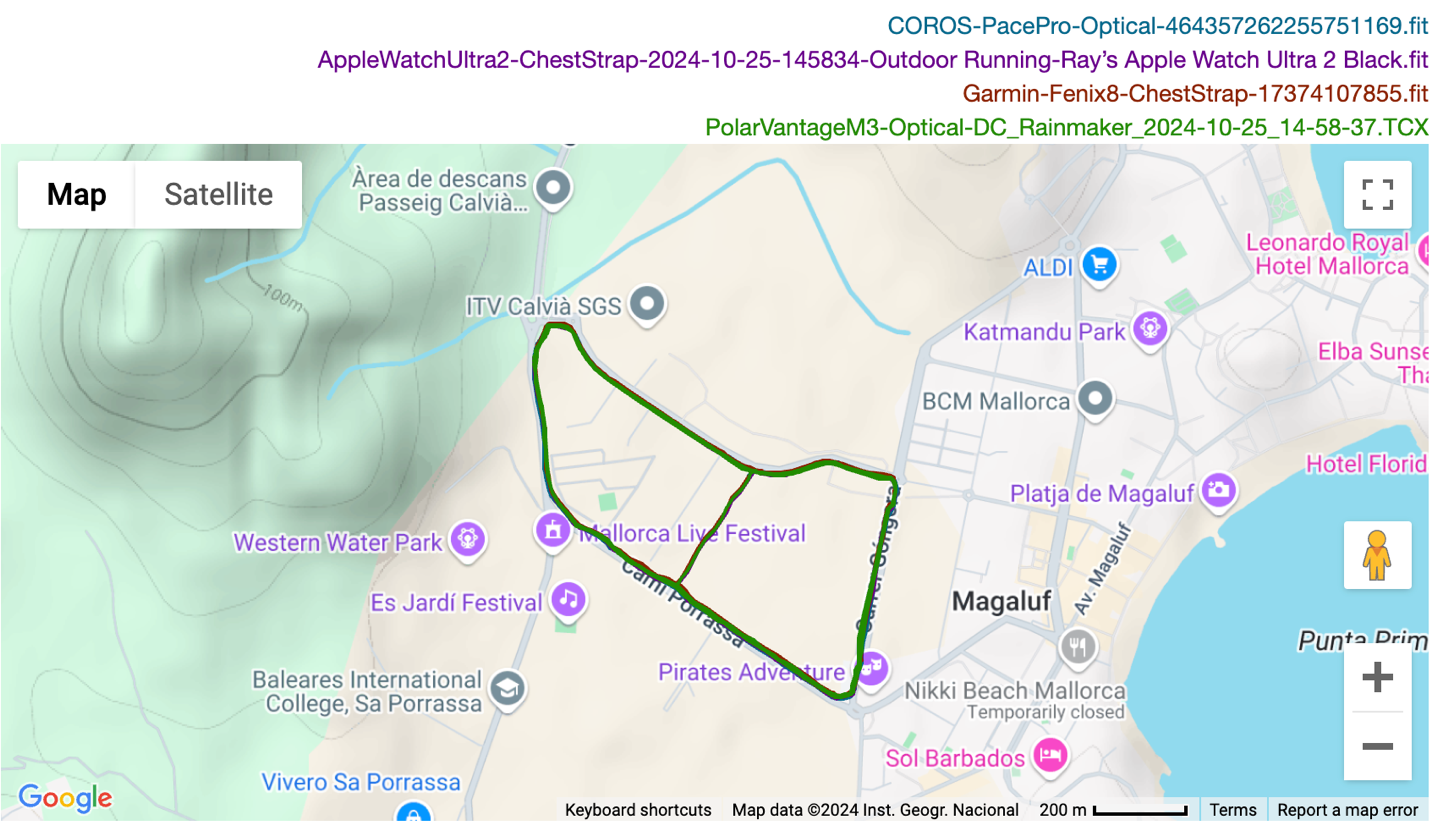
Next, looking at GPS, starting off with that trail run, again, things at a high level look basically identical to the Garmin Forerunner 265, Suunto Race S, and Polar Vantage M3. All of these were in multiband mode:

If we zoom down a bit into the trees, we can see that at a medium zoom level, again, things look pretty similar:

However, when I zoom all the way down, for whatever reason, the COROS Pace Pro is just slightly offset from the rest. Not much, perhaps 2-4 meters at most. But it is consistently offset virtually the entire run (you can click the link to see/move around the full map).

Increasing complexity, we’ll head up into the mountains on a road ride. This route has plenty of very challenging switchbacks against mountain cliff faces, which were down both going up as well as doing down at speed.

Zooming in on an easier tree section first, looking pretty good:

And then another busy switchback section along cliff edges, and also, very solid:

In fact, it’s keeping up perfectly with dedicated cycling GPS computers without issue:

Lastly, we’ve got an openwater swim. In this case the COROS Pace Pro on one wrist, and the Garmin Forerunner 265 on the other wrist. At a high level, this looks to be a vast improvement over…well…every other COROS watch to date, which have all failed my openwater swim tests badly, so this is a huge improvement:

If we zoom in, we see a little bit of corner cutting. Not drastically so, but it’s there. Still, for COROS, this is a huge leap forward, and the first time I’ve ever seen a usable swim track from the company:

Overall, I’m pretty happy with both heart rate and GPS performance here. The only problem here is outdoor cycling, which many watches can struggle with, though the Pace Pro definitely struggles more than most. But otherwise, it appears solid.
Oh – and as for battery life, while, that’s a bit trickier. I was seeing some vastly bad battery life performances on a recent bike ride (~10%/hour), and brought it to the attention of COROS. In doing some dives into my logs, they found a rare bug that can basically cause the GPS chipset to go crazy. They’ve introduced a fix for that, which will slightly reduce GPS accuracy in certain scaarnbos, in the meantime. That fix will go-live today for all users. When I don’t run into that GPS condition, in dual-frequency GPS, I’m getting roughly 5%/hour battery burn. Though, that trail run above indicates a slight offset, which may be due to the lower accuracy mode required to sidestep the GPS battery burn issue. COROS says they they have a real fix in the coming days which will get the GPS accuracy back to the original modes, without the battery burn.
Wrap-Up:

Ultimately, I think COROS has built a very solid watch here, arguably one of their best watches I’d say. The screen is brilliant and works well, and the GPS & heart rate is probably the best we’ve seen on a COROS watch (no matter the price point). Speaking of that price, while it is indeed higher than the original COROS Pace 3, it’s inline with the above watches Suunto Race S ($349), Polar Vantage M3 ($399), and Garmin Forerunner 265 ($449). Those watches all have slightly different features, some more, some less. For example, the Garmin Forerunner 265 lacks maps but has other sports features as well as streaming music platforms and contactless payments. But if you want maps, it’s the wrong choice. I’ll dive into all that stuff in my next post/video, as I’ve been using them side-by-side to compare.
In any event, the Pace Pro is undoubtedly going to kick off the AMOLED transition for COROS. While they said they’ll always keep MIP based models around, I suspect like Garmin that’ll basically only end up being small fraction of their units. Ultimately, probably just a single product line. With battery life on AMOLED units starting to rival that of MIP-based units (especially in GPS modes), there’s simply less and less reason to have a MIP based display. Even more so as companies nuance that backlight to avoid it being distracting (an are that COROS does well for it’s first attempt, but leaves a little bit of polish to finish up on).
Ultimately, this watch is right there in the mix and highly competitive, and you won’t go wrong with it.
With that, thanks for reading!




